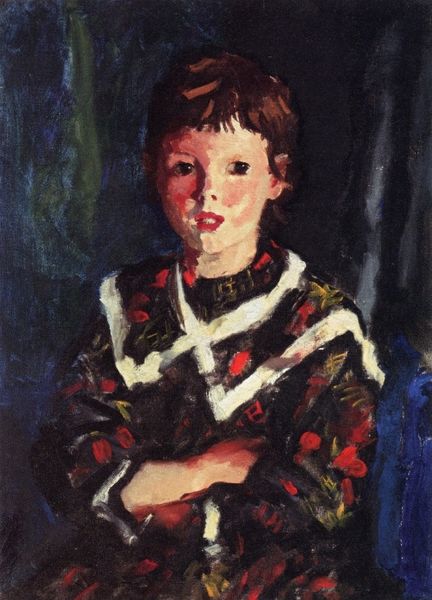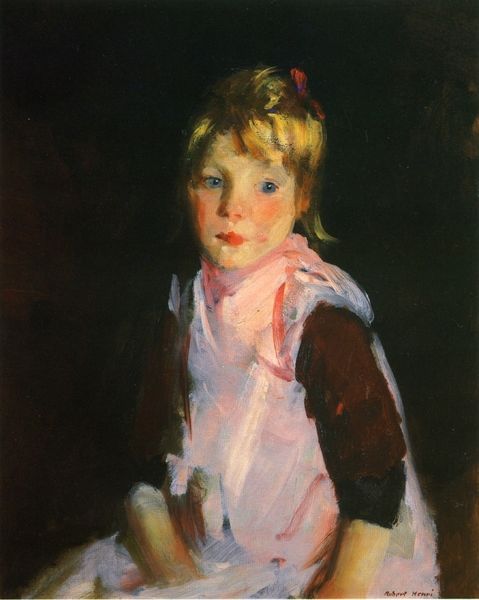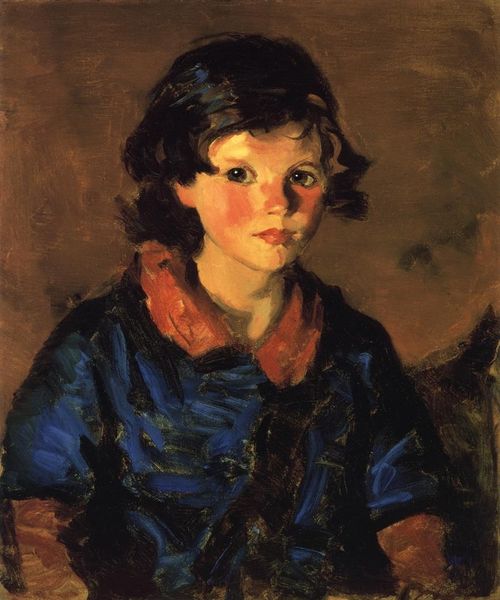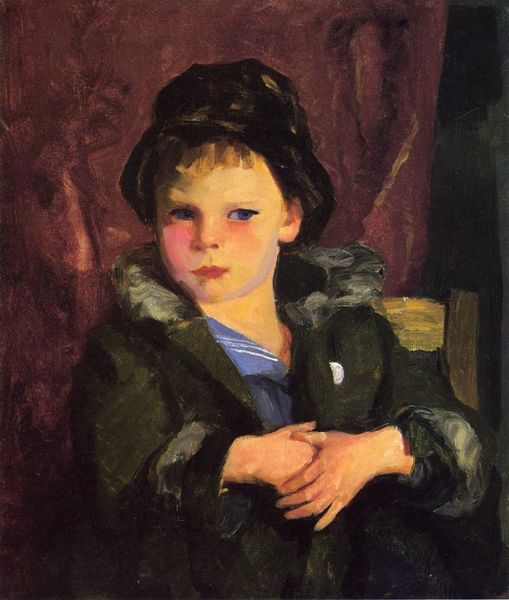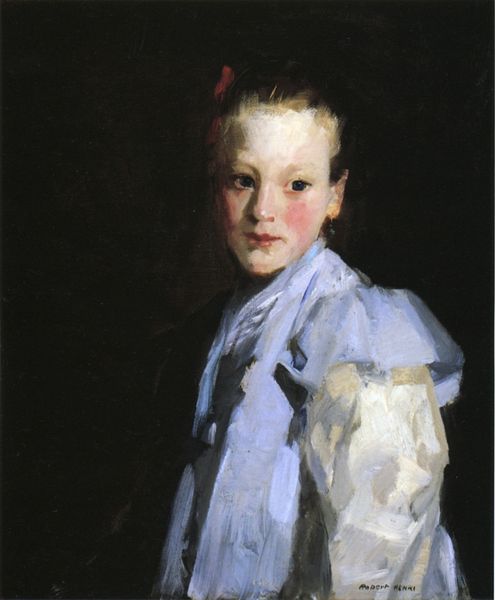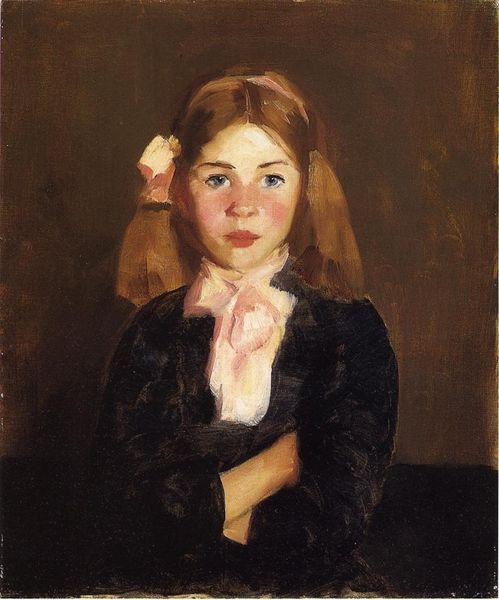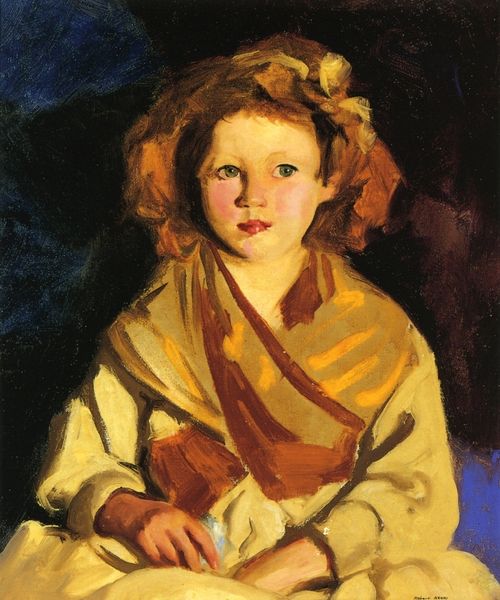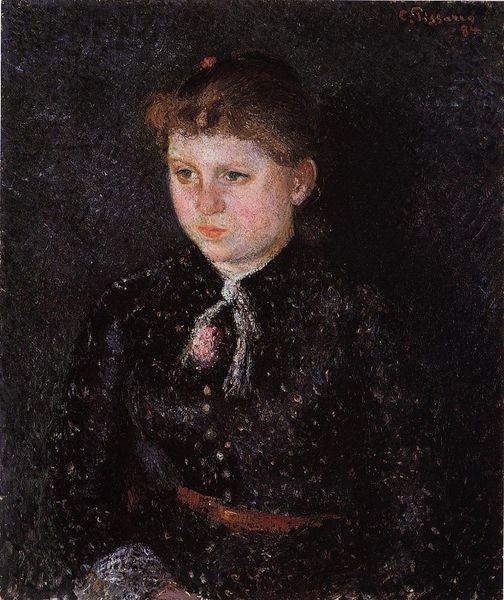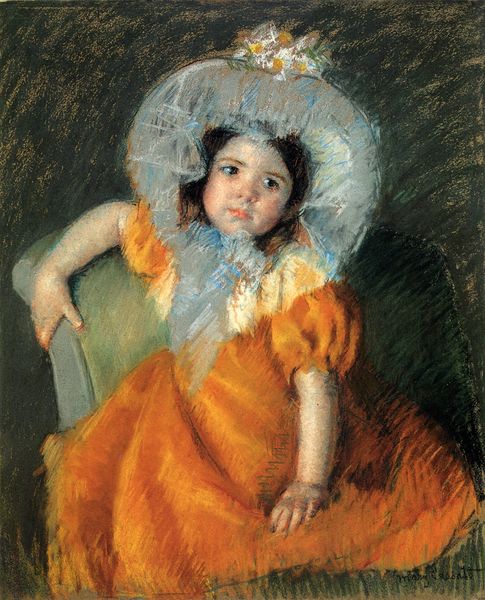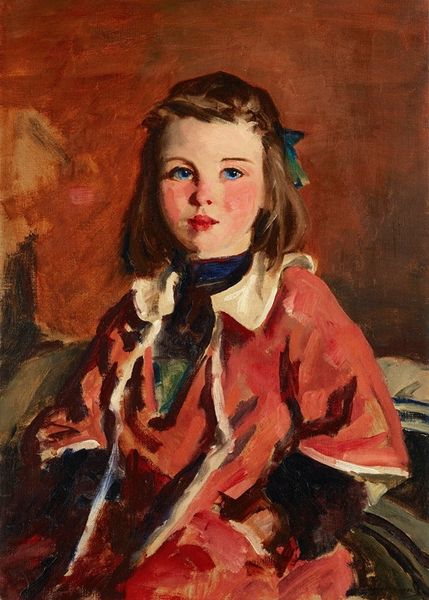
Copyright: Public domain
Editor: This is Robert Henri’s "Bridgie," also known as "Girl with Chinese Dress," painted in 1927 using oil. I'm really struck by the contrast between the darkness of the background and dress, and then the vivid colors of the girl’s face. It creates such a captivating, almost dreamlike effect. How do you interpret this work, especially in relation to cultural symbolism? Curator: Notice how Henri utilizes the ‘Chinese dress’ itself – less as a faithful depiction of Chinese culture, but more as an exotic element lending a sense of worldly sophistication to young Bridgie. What symbols or cultural cues does the artist use to emphasize her youthfulness against the 'borrowed' cultural richness, as opposed to authentic representation? Editor: I see, it's about contrasting youth with an imposed or 'borrowed' culture... The bow in her hair almost reads like a classic childish marker compared to the sophistication suggested by the dress. Curator: Exactly! It reveals an interesting tension, doesn't it? Henri employs her gaze to convey directness, demanding to be seen not just as a child dressed up but as an individual. Does this confrontation with the viewer invite questions about identity and performance? Editor: Absolutely. Thinking about it now, her slightly melancholic expression challenges that easy read of childish naivete. Thanks! It helps to consider how symbols intersect. Curator: Yes, thinking about visual symbols layered with cultural context gives an avenue into Henri's process and challenges inherent notions within the painting. Thank you.
Comments
No comments
Be the first to comment and join the conversation on the ultimate creative platform.
